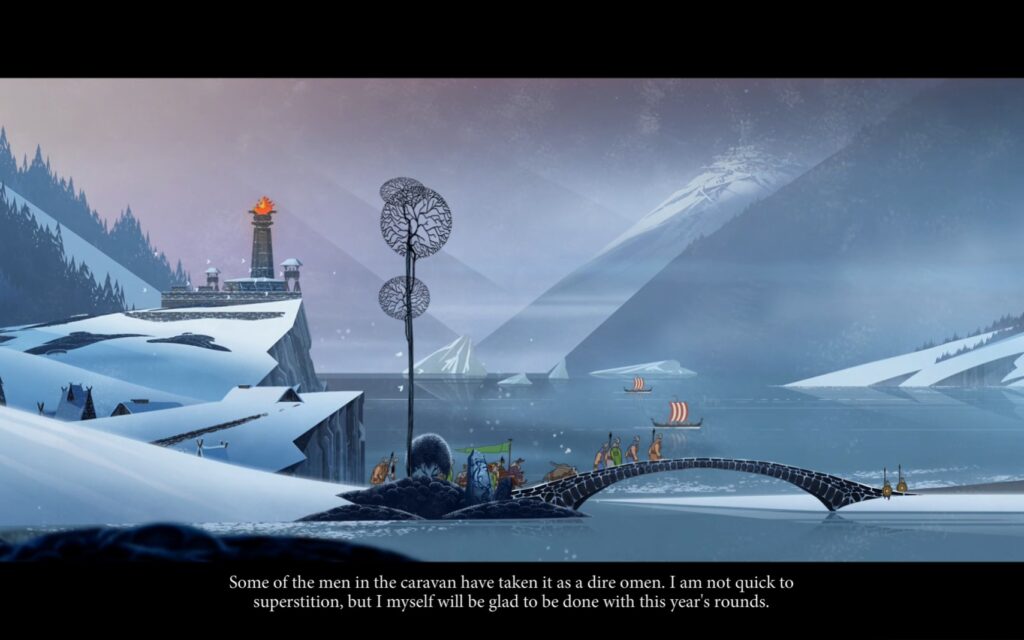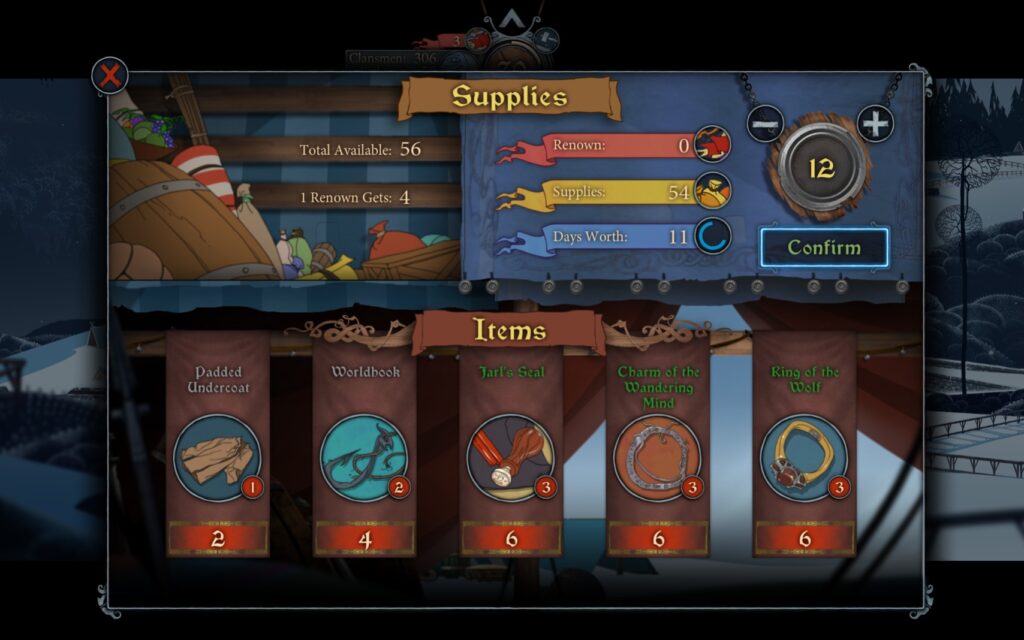The Banner Saga is part tactical combat game, part interactive story. It’s a game that absorbs you into an entirely new fantasy world. It’s a story of heroes, but also one of survival, as you also will need to maintain your supplies and the people that follow you.
The Banner Saga’s begins by telling you that the Sun is no longer working. The world is slowly freezing over, and you are leading your clan to survival. It bears some similarity to Frostpunk, but that’s where it ends. Unlike Frostpunk, The Banner Saga is set in a fantasy land loosely based on Medaeval Viking mythology.

The Banner Saga is, in part, a story based game where you will have to make decisions that will affect the way it plays out. You follow one of two characters and their caravans as they move from city to city, changing perspective from chapter to chapter. A lot of time is spent watching your clan travel, but it never feels like you are doing nothing.

There is always something to do, be it checking the map, setting up camp to rest and recover from battles, deciding whether or not to trust other travellers that cross your path, or dealing with the many encounters you will have along the way. As you travel you will need to maintain both supplies and morale in order to keep your clan alive.

Checking the map is a lot more fun than it is supposed to be. Maybe it’s because I was obsessed with maps when I was a kid. My favourite books were the world atlas and the AA road map of Great Britain. Any fantasy novel that had a map was an instant sell to me.
The map in this game is extremely detailed and taps into that love of maps I had as a child. Every feature, every city, every county can be clicked to reveal a little background about it. A lot of areas you don’t visit during the game: it’s all purely world building. And fun world building, at least to me.
You will inevitably encounter situations where you need to fight, and this is where the fun begins! Combat is a turn-based game played on a grid. For each character’s turn you can usually move and/or perform an action (or attack). It’s simple enough to learn, but the skills each character has adds an extra layer of depth that makes combat fun.

Each character in a combat has to main statistics: Armour and Strength. Strength acts as both health, and attack damage. The base damage a character does is equal to their Strength minus their target’s strength. So injured characters will naturally do less damage.

Armour blocks damage from attacks, preventing damage to health. However, you can choose to attack Armour instead of Strength so that future attacks against an enemy don’t get blocked by as much Armour. It’s simple, easy to understand, but adds that extra layer of strategy needed to force you actually think.

As you progress in the game and win battles you will earn Reknown. This acts as a currency that can be used both to upgrade your characters and purchase items and supplies when you visit towns. You will eventually have to choose between having stronger characters and having enough supplies to feed your people, so choose wisely. I’m not sure I did…

There are three main races in The Banner Saga’s setting: humans, Varl, and the Dredge. The Varl are giants with horns growing out of their heads that have a mostly stable peace with humans. The Dredge are the main antagonists, slowly advancing on human and Varl territories, forcing them into a retreat. Why the Dredge are attacking, and how to escape them, serves as the major motivation for the story.

The game is amazingly well designed, with all of these elements feeding into each other. I’ve played through the game once already, and I didn’t do too well. Yet I already find myself eager to play it again, to see what happens if I make different choices, or if I can learn how to win battles more consistently.




